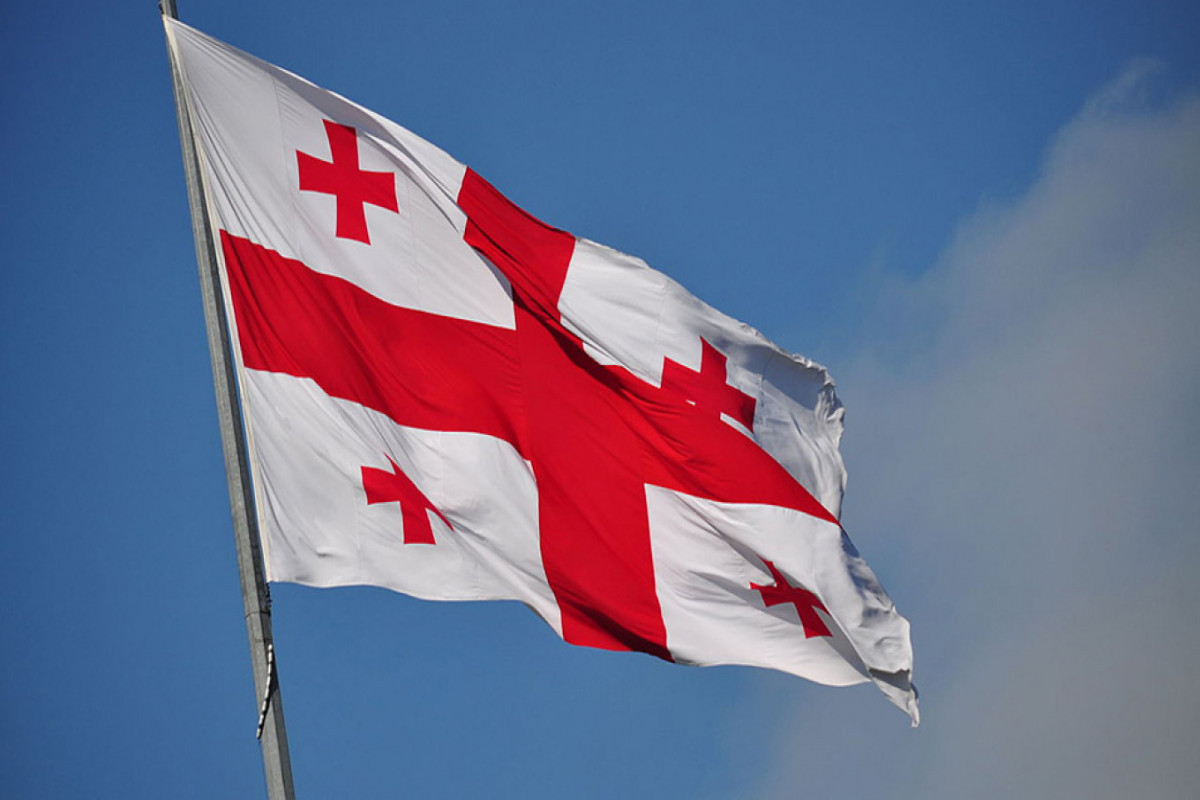US Army picks Azerbaijan for simulated invasion

A July, 2006 "Operational Requirements Document," obtained by DANGER ROOM, outlines out a series of simulations and training exercises that helped form the technical and operational foundation for Future Combat Systems. These trials were all based on Azerbaijan’s "Caspian Sea scenario." Most involve the taking of the capital city, Baku.
Earlier war games were set in other locations -- places where American troops might some day seem to be more likely to fight. Those included a "North Korean Architecture Analysis," to see if a new kind of munitions launch system was feasible. Another, set "in the 2010(+) time frame," evaluated "battle command" systems in "the complex terrain of the Balkans."
But what makes the Azerbaijan model different is that almost every component of the massive Future Combat Systems effort -- from the "Infantry Carrier Vehicles" to the packbackable robots to the flying drones to the next-generation mortars to the commander’s rolling headquarters -- had their "mission profiles... based on three Major Combat Operations (MCOs: 1, 2, 3) conducted within the Caspian Sea scenario."
Army planners then used these mission profiles to figure out how the system might work in combat. Take the Infantry Carrier Vehicle’s profile, as an example. Based on a series of simulated operations in Azerbaijan, each approximately 70 hours long, the Army decided that the vehicle would typically fire 157.7 rounds from its primary weapon; use its "active protection system" to ward off enemy grenades 8.3 times; be subject to 5.3 hours of chemical, biological, radiological, on nuclear "overpressure"; and have troops get out of the vehicle 13 times.
These profiles then provide the "rationale" for almost everything within Future Combat Systems. They serve as key "source document[s]" on planning for everything from logisitics to testing to manpower needs,†the DANGER ROOM
Azerbaijan was picked as the FCS model because "the nation now faces a new reality embodied in the Caspian Sea scenario," Army consultant Clyde T. Wilson in an Armor magazine article.
“The Caspian Sea scenario is not about fighting in the Caspian Sea area, but is all about the next most dangerous situation U.S. forces are likely to face. In many ways, it follows the 1950-53 Korean War scenario. Country A (South Korea) is attacked by Country B (North Korea). The U.S. comes to the assistance of Country A. The thrust of the scenario is how does the U.S. enter the battle area and build-up sufficient forces to achieve its national goals. The scenario is further complicated by Country C (China), which threatens to enter the conflict, especially during the buildup phase when the U.S. is most vulnerable.
The Korean scenario provides national decisionmakers with significant geopolitical issues. The situation becomes more complicated when adding an asymmetric threat like we saw during Vietnam. The Caspian Sea scenario is about getting credible force into the area of operations and deterring aggression by Country C. In the scenario, the arrival of U.S. heavy forces represents endgame. At this point, we dominate the battlefield. After heavy forces arrive in the area, they must be prepared to conduct combat operations against the heavy threat presented by Country C while providing self-protection against an asymmetric threat that specifically targets U.S. vulnerabilities.
Wilson doesn’t specify which nation "County C" represents in this scenario. But, according to the Washington Post’s William Arkin, "the United States and Britain have been conducting war games and contingency planning under a Caspian Sea scenario that could also pave the way for northern operations against Iran (www.washprofile.org)
This Naval Postgraduate School paper, on the other hand, says that Azerbaijan was picked for its “complex terrain... limited avenues of approach with fast changing relief, such as mountainous terrain." That kind of topography "taxes the mobility and agility of the FCS. With a limited road network, limited infrastructure, and steep, mountainous terrain, the FCS is placed in a difficult scenario which it must overcome". /APA/
Americas

U.S. could sanction Georgia politicians to ‘defend democracy’ - Media

Saudi crown prince, US national security adviser meet on Gaza, bilateral ties

Seven dead after powerful storms slam Houston, Texas

Pentagon to host virtual meeting of Ukraine Defense Contact Group on May 20
NEWS FEED
U.S. could sanction Georgia politicians to ‘defend democracy’ - Media
Azerbaijan's ANAMA finds 35 landmines in liberated territories
Azerbaijan to relocate 3,193 residents to Jabrayil's Buyuk Marjanli, Karkhulu, Sarijalli, and Mashanli villages-PHOTO
5 injured in school attack in E China's Jiangxi
Azerbaijan Defense Minister expressed condolences to Iranian side
President Ilham Aliyev received Speaker of Latvian Saeima
Azerbaijan became 5th major trading partner of Georgia in first three months of 2024
Ali Bagheri to exercise duties of Foreign Minister in Iran
Iran declares five days of mourning
Georgian PM criticized Zourabishvili for vetoing foreign influence law-UPDATED
Azerbaijan accounted for 22.9% of rail freight sent to Georgia this year
Baku hosts General Assembly of Turkic Universities Union
Azerbaijani President congratulates his Cameroonian counterpart
Demarcation works in direction of Kirants village of Azerbaijan-Armenia border about to be completed - Media
National flag at Iranian embassy in Azerbaijan was lowered to half-mast
Delegation of Latvian Parliament visit grave of National Leader of Azerbaijan and Alley of Martyrs -PHOTO
Minister: Increase observed in transportation volume managed through Middle Corridor
Azerbaijan's MFA and Foreign Minister conveyed their condolences to Iran
Bodies of Iranian president and others killed in helicopter crash sent to Tabriz, the search is over-VIDEO
Azerbaijani President conveyed his condolences to the Supreme Leader of Iran
Mohammad Mokhber to exercise powers of president of Iran
Natural gas prices surge at NYMEX
Indonesia minister says Musk to consider offer to build EV battery plant in country
Iranian media: Iran's President and his staff died in a helicopter crash
Iran RCS: Remains of the helicopter found, but no signs of alive passengers
Reuters: Helicopter of the President of Iran, Ibrahim Raisi, was completely burnt as a result of the accident -VIDEO
Wreckage of helicopter carrying Iran’s president located as rescue efforts continue
Türkiye’s Akinci UAV identifies source of heat suspected to be crash site of Iranian president’s helicopter-VIDEO
DPRK forced to take measures to increase nuclear deterrence after US test — statement
Rasisi’s helicopter passenger twice called to say he was feeling bad — senior diplomat
MES: Azerbaijan is ready to send 40 rescuers to search-rescue operation in Iran
Saudi king diagnosed with lung inflammation
Location of Iranian president's crashed helicopter discovered
Türkiye sending night vision search helicopter, 32 rescuers, 6 vehicles to help Iran find president's crashed copter
Fenerbahçe wins derby against Galatasaray
Presidents of Azerbaijan and Iran met in the presence of delegations-PHOTO-UPDATED-1
Iran asks EU for help in finding missing president
Türkiye monitoring developments in Iranian president's helicopter crash
President of Iran: "We were one of the first countries to explicitly state that Karabakh is the territory of Azerbaijan"
Seyyed Ebrahim Raisi: "The most important issue for us is the interests of our countries"
Manchester City win record fourth-successive Premier League title
President Ilham Aliyev, President Ebrahim Raisi attended commissioning ceremony of Khudafarin hydroelectric complex, opening ceremony of Giz Galasi hydroelectric complex-PHOTO-UPDATED-1
Search operation underway to find Iranian President's helicopter-VIDEO-UPDATED-1
Azerbaijan, as friendly and brotherly nation, is ready to provide all necessary support to Iran, says MFA
Azerbaijan ready to provide assistance regarding helicopter incident involving President of Iran - President Ilham Aliyev
Lives of Raisi, Iranian FM at risk after helicopter crash - Reuters
Several injured as passenger buses collide in Baku-PHOTO
Chairman of the Latvian Parliament visited Azerbaijan's Shusha
New page opens in Iranian-Azerbaijani relations - ambassador
Seyyed Ebrahim Raisi: Iran's relationship with Azerbaijan is more than a relationship with a neighbor

